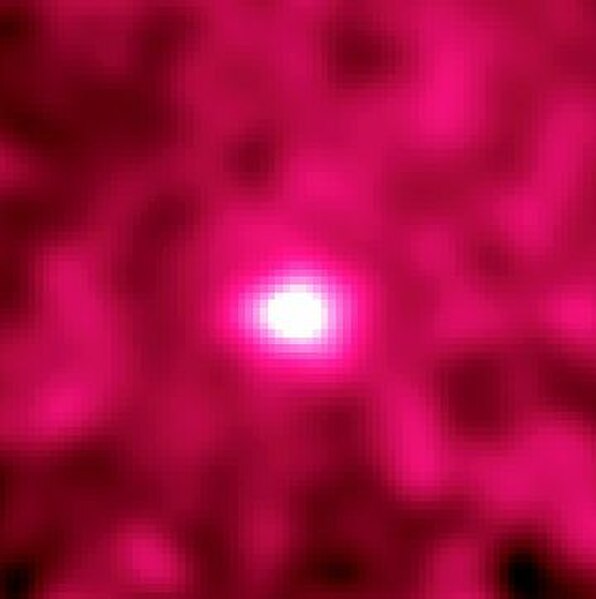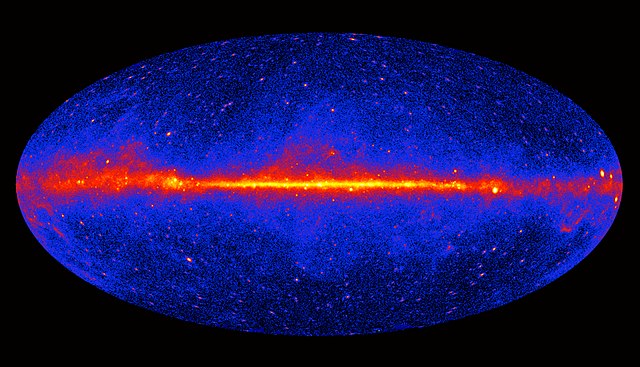In gamma-ray astronomy, gamma-ray bursts (GRBs) are immensely energetic explosions that have been observed in distant galaxies, described by NASA as "the most powerful class of explosions in the universe". They are the most energetic and luminous electromagnetic events since the Big Bang. Bursts can last from ten milliseconds to several hours. After an initial flash of gamma rays, a longer-lived "afterglow" is usually emitted at longer wavelengths.
Artist's illustration showing the life of a massive star as nuclear fusion converts lighter elements into heavier ones. When fusion no longer generates enough pressure to counteract gravity, the star rapidly collapses to form a black hole. Theoretically, energy may be released during the collapse along the axis of rotation to form a GRB.
Positions on the sky of all gamma-ray bursts detected during the BATSE mission. The distribution is isotropic, with no concentration towards the plane of the Milky Way, which runs horizontally through the center of the image.
The Italian–Dutch satellite BeppoSAX, launched in April 1996, provided the first accurate positions of gamma-ray bursts, allowing follow-up observations and identification of the sources.
NASA's Swift Spacecraft launched in November 2004
Gamma-ray astronomy is a subfield of astronomy where scientists observe and study celestial objects and phenomena in outer space which emit cosmic electromagnetic radiation in the form of gamma rays, i.e. photons with the highest energies at the very shortest wavelengths. Radiation below 100 keV is classified as X-rays and is the subject of X-ray astronomy.
The Moon as seen by the Energetic Gamma Ray Experiment Telescope (EGRET), in gamma rays of greater than 20 MeV. These are produced by cosmic ray bombardment of its surface.
Compton released into orbit by the Space Shuttle, 1991
First survey of the sky at energies above 1 GeV, collected by Fermi in three years of observation (2009 to 2011).
Fermi Second Catalog of Gamma-Ray Sources constructed over two years. All-sky image showing energies greater than 1 GeV. Brighter colors indicate gamma-ray sources.








